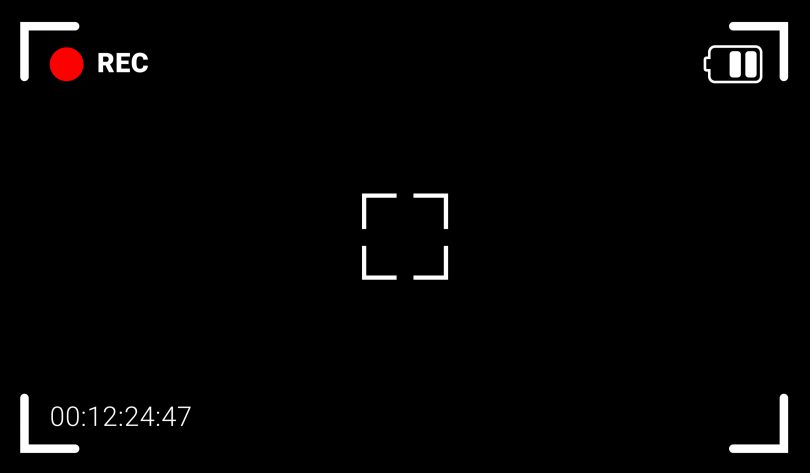By Andrew Bennett, KPB Contributor
This article was first posted to the KPB website 3 years ago. Since then, it’s message has only become more important. If you are serious about playing college baseball, you need to put together a skills video. This article will explain why!
For aspiring college baseball players, the necessity of a skills video has become a fact of life. A handful of highly sought after, elite-level Division I recruits can probably do just fine without video, but for the vast majority of high school baseball players, opportunities to be recruited and earn scholarship money and/or spots on college rosters become severely limited when “Sorry, I don’t have any” is the response to a college coach’s request for video. There is a ton of great advice out there for high school baseball players hoping to play at the next level (the best of which you’ll find here at KPB), but for whatever reason, countless players still miss the boat when it comes to video. Quite simply, a skills video is a must.
The biggest problem I’ve observed the past few years, however, is not that players are unaware they should have video; it’s that they don’t understand how little effort is needed to make video that can be hugely helpful to a college coach trying to make an initial evaluation of a player’s tools and abilities. But before we get there, I want to take a minute to outline how and when video enters the picture when college coaches communicate with prospective players.
As the recruiting coordinator for a college baseball program, a big part of my job is responding to email inquiries from high school players who are interested in our school. We get a lot of them every day! I do my absolute best to respond to each player who reaches out to us, thanking him for his interest in our program and asking him to fill out our online recruiting questionnaire.
Some college coaches will disagree with me on this, but I have always viewed the questionnaire as a very important step in the recruiting process, for three reasons: it gets the player’s contact information into our system so that we can stay in touch with him, it allows us to immediately have informed and productive conversations with the player should we choose to move forward with him, and most importantly, it shows me the player’s interest in our university is genuine. If a player isn’t willing to spend two or three minutes filling out a questionnaire, why should I feel confident he’ll eventually take the time to visit campus or apply for admission (or study for midterm exams once he enrolls, for that matter)?
If the information submitted via questionnaire seems to indicate a potential fit for our school (based largely on academics), then it’s worth my time to watch a few seconds of video. We now list “skills video link” as the first field in the “athletics” tab of our questionnaire to emphasize its importance, and I imagine we’re not alone in that. A word of advice to potential recruits: when you’re asked to provide a video link, you should actually take the time to copy and paste the full web address where indicated, so that your video is literally one click away for a college coach. When you only enter the name of your recruiting profile or of the platform that hosts your video, you’re adding a cumbersome step (searching) for coaches, one they may or may not be willing to take. And hopefully it goes without saying that any site requiring coaches to create a login, enter a password, or retype their email address will drastically reduce the number of views your video receives. Like in most other walks of life, opportunities in college recruiting come from the right kind of exposure, and you always want statistics working in your favor.
As promised, however, I want the focus of this post to remain on the actual video footage itself. First and foremost, skills video does not need to be professionally edited. It does not need to look impressive, because college coaches don’t care! Remember, you’re not producing a trailer for an action movie. I can’t speak for every college coach, of course, but I’m willing to bet most coaches would agree there are a handful of things that basic video allows us to identify: athletic movement patterns from good feet to soft hands, clean throwing mechanics, a fluid swing, and more. It allows us to judge if you pass the “baseball look” eye test. There’s not much additional information we can glean from video, although radar gun readings do provide important verifiable and measurable skills that can help you get recruited without further evaluation! Even with radar readings, we can’t evaluate performance, production, toughness, composure, instincts, or intelligence. But video provides a great starting point and a strong suggestion of whether it’s worth our time to dig deeper.
Players who tell me they don’t have video generally give one of three responses when I ask if they can get me some in the near future: “Sorry, I don’t think I’ll be able to,” “I’m not sure how, but I’ll try,” or “I will make some as soon as I can.” To the players in that first group: unless I’m able to see you play in person, I cannot recruit you! The harsh reality is that without being able to evaluate your abilities in some way, I can’t justify spending any more time on you. I typically try to give some guidance or instruction to the players in the second group, but unfortunately, I usually don’t have the time to coach a high school player through the video-making process (but this article does!). The players in the third group certainly give me something to look forward to, but what amazes me is that weeks or even months will often pass before the video shows up in my inbox, and in many cases the player has dropped off our radar entirely by that point. My guess is that part of problem may be a perception that creating video should be a time-consuming, long-term project. That may have been the case before smartphones, but now it couldn’t be further from the truth.
Unless you are a pitcher in an off-season “shut-down” phase, you should be able to make video within a day or two of a college coach’s request. If you have a smartphone, you can take video! Step in the cage, hand your phone to a teammate, and have him record four or five swings (preferably batting practice) from the side and four or five from the back. Now get a throwing partner and have that same teammate record you throwing. You get the idea: for each skill specific to your position, 15-20 seconds of footage is plenty. Throw it all together in a two- or three-minute YouTube link and send it out. If you don’t know how to post video to YouTube, find someone who does. If you can’t find anyone, just email the files to the coach separately, right from your phone. And if you don’t own a smartphone, borrow one.
Making video really can be that simple. You don’t need an extensive collection of game highlights, and you certainly don’t need to spend hundreds of dollars being filmed professionally. I recently asked a prospective player to make some video for me and because none of his teammates were around that week, he had his girlfriend film him (a) throwing ground balls to himself off a wall in his high school’s gym and (b) taking dry swings with a fungo (no baseballs). Not ideal, perhaps, but guess what? He looked very smooth and athletic in everything he did, so I decided to invite him to campus for a workout.
If you’re not a good baseball player, no amount of video in the world will inspire a college coach to recruit you. Conversely, there are plenty of good players out there who get recruited and offered scholarships without ever recording a second of footage. But if your goal is to play college baseball, the most powerful way to maximize your opportunities is to make yourself easy to evaluate. A coach may or may not like what he sees, but you’ll never move forward until you give him the chance to make that decision.
Need more guidance on how to make a video? Try these articles on creating a recruiting video for position players and pitchers. All KPB’s articles on video can also be accessed here.







